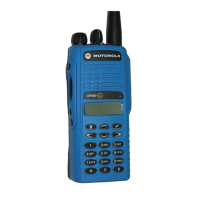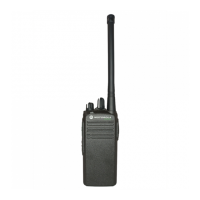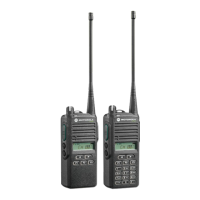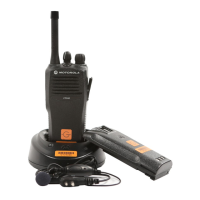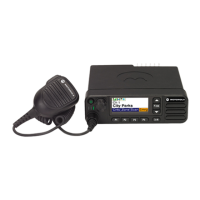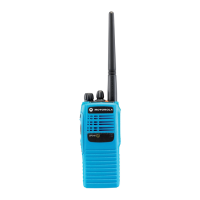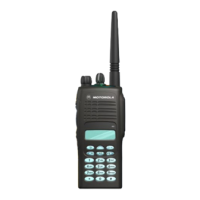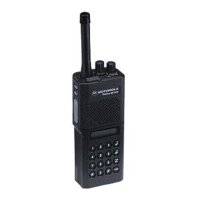Chapter 2 Theory Of Operation
2.1 Introduction
This chapter provides a basic theory of operation for the radio components.
2.2 Major Assemblies
• Main PCB – Contains the RF circuits which comprises receiver, transmitter, phase-locked loop
(PLL) frequency synthesizer, micro controller, power supply, audio and digital circuits
• Display and Keypad PCB (Limited and Full Keypad models only) – 8 characters (14 segments
star burst) and 10 icons with backlighting, liquid-crystal display (LCD)
• Volume Knob PCB (PMDN4129AR) – Rotary Volume Knob
2.2.1 Receiver
The radio's receiver is a double conversion super heterodyne with 1st IF of 45.1 MHz and 2nd IF of
455 kHz.
UHF1 receiver design covers the frequency range of 403 – 447 MHz.
UHF2 receiver design covers the frequency range of 435 – 480 MHz.
VHF receiver design covers the frequency range of 136 – 174 MHz.
Figure 2-1. Receiver Block Diagram
Crystal
Filter
Crystal
44.645MHz
1st Mixer
RF
Amp
Preselector
Filter
Postselector
Filter
RX from
ntenna Switch
Inj Filter
First LO
from Synthesizer
IF
Amp
IF
Amp
LPF
Ceramic
Filter
Descriminator
455FW
455HW
Quadrature
Detector
RSSI
N/S_SW
Recovered Audio
455C24

